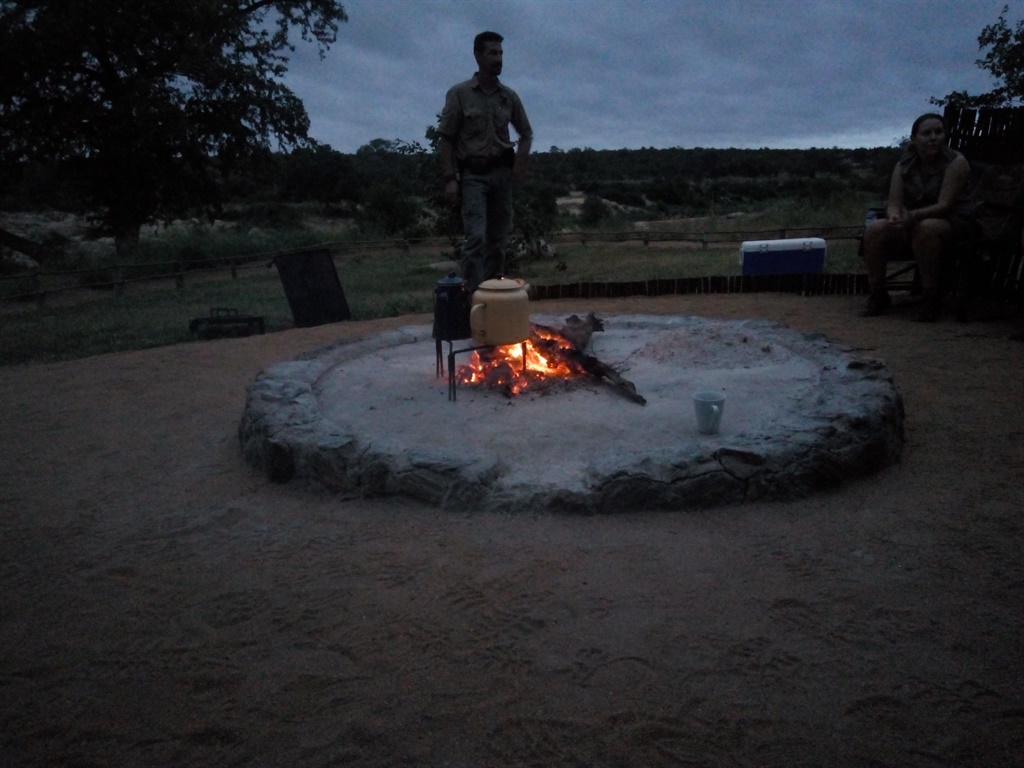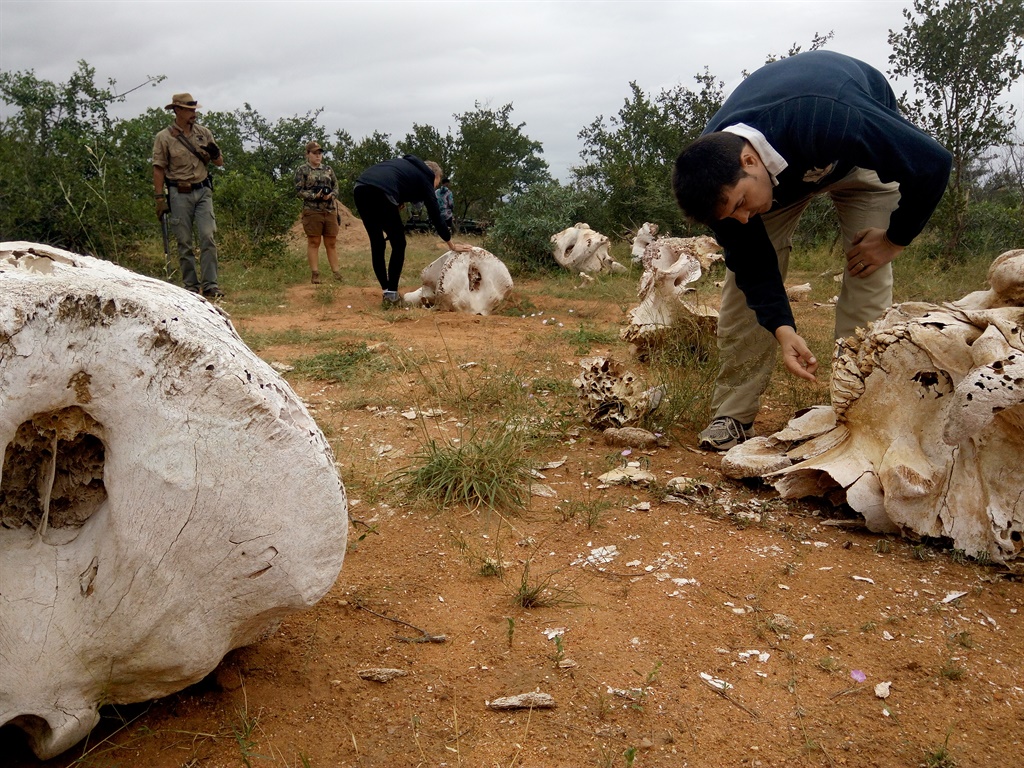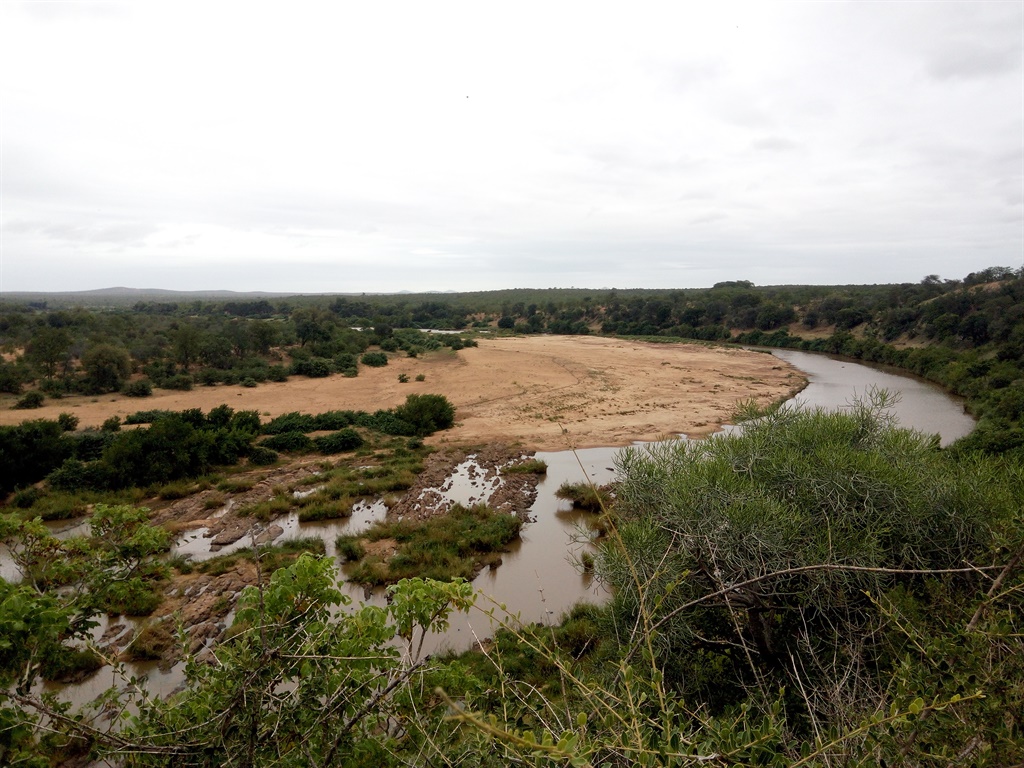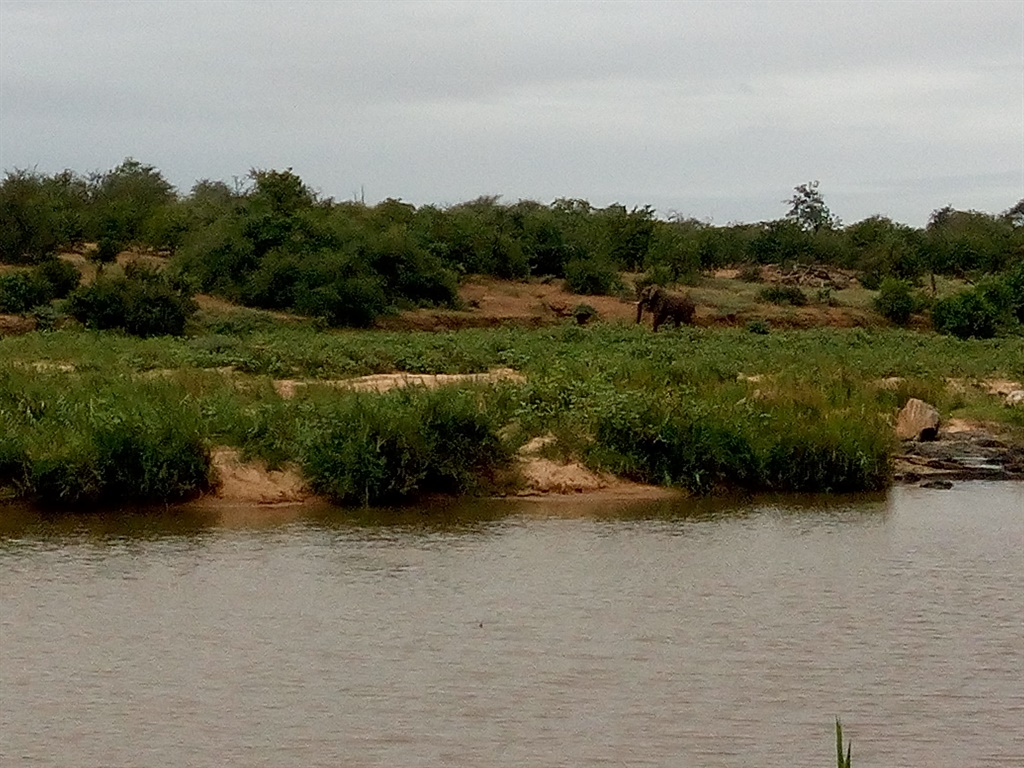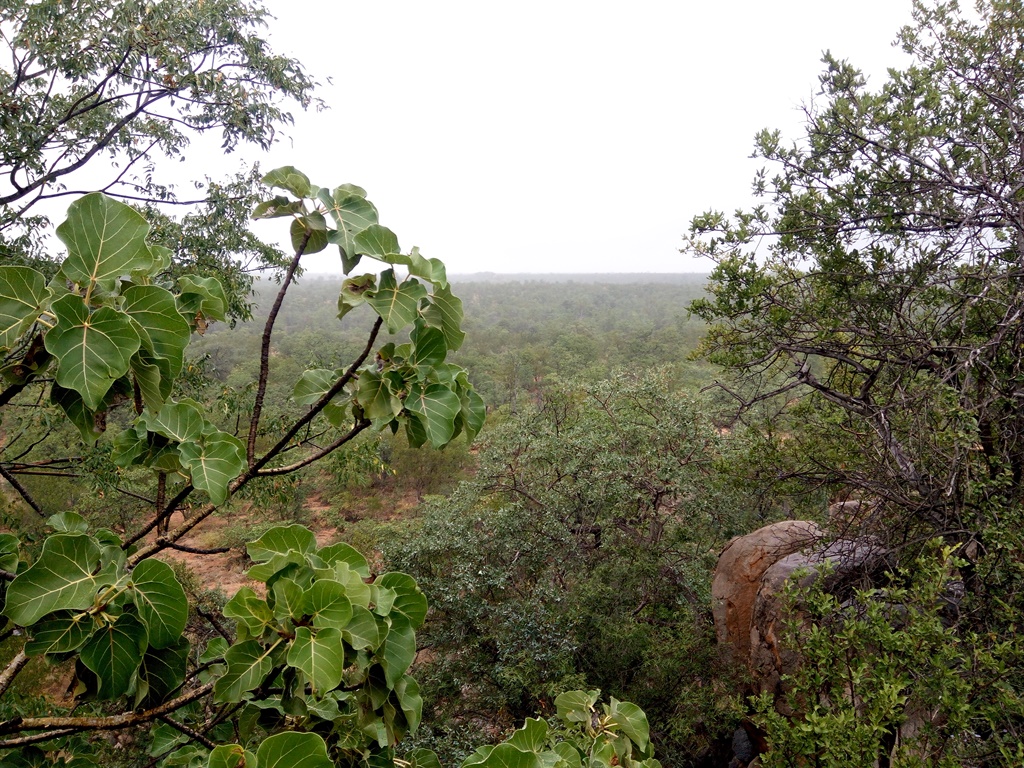Heightened senses and a digital detox. On foot with Mthimkhulu Wilderness Trails
Posted: Wed Aug 22, 2018 10:33 am
2018-08-21 12:40 - Ethan Van Diemen
Flying high above the plateau escarpment that separates the highveld from the Mpumalanga Lowveld, one is immediately awestruck by the seemingly empty and vast bush that can be seen below.
It is an incredible sight, especially considering that the idea of it being an empty space could not be further from the truth - what with it teeming with all manner of wildlife.
This sight takes on an additional significance as the realisation sets in that this vast bushveld will be where you will be walking around exploring, literally on-foot.
For those looking for an authentic, rugged bush experience, with sensory-heightening excitement, untrammelled by the limitations of a vehicle and unpretentious in its detachment from the buzz of technology and the modern world - Mthimkhulu Wilderness Trails offers visitors what they want in spades.
The start of an adventure
Hopping off of our small plane at one of the tiny, private airports all across safari land, we were smacked in the face by an unrelenting, unforgiving and pure African heat. Hard to believe that earlier in the day it had been mild and gloomy only a few hours away in Johannesburg. That’s one way for you to be sure you’re really in the bush.
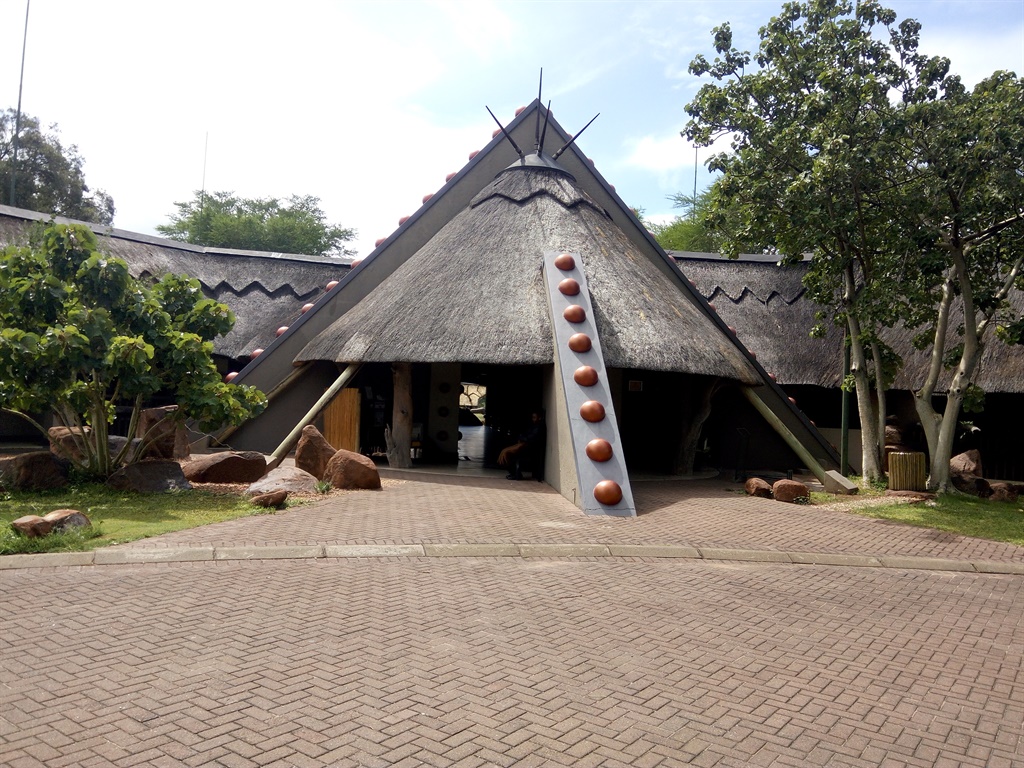
A panoramic photograph of the arrivals area at the airport in Phalaborwa. (Photo: Ethan Van Diemen)
Greeted by two of the tracker-guides that would later prove, beyond measure, their tracking ability and environmental and wildlife knowledge, we were welcomed into our snack-laden motor vehicle and off we went.
Travelling across often bumpy, always dusty roads as we made our way to the Mthimkhulu Wilderness Trails camp, we were given the chance to acclimatise and ask questions. It really cannot be overstated how receptive our tracker-guides would prove to be, but more on that later.
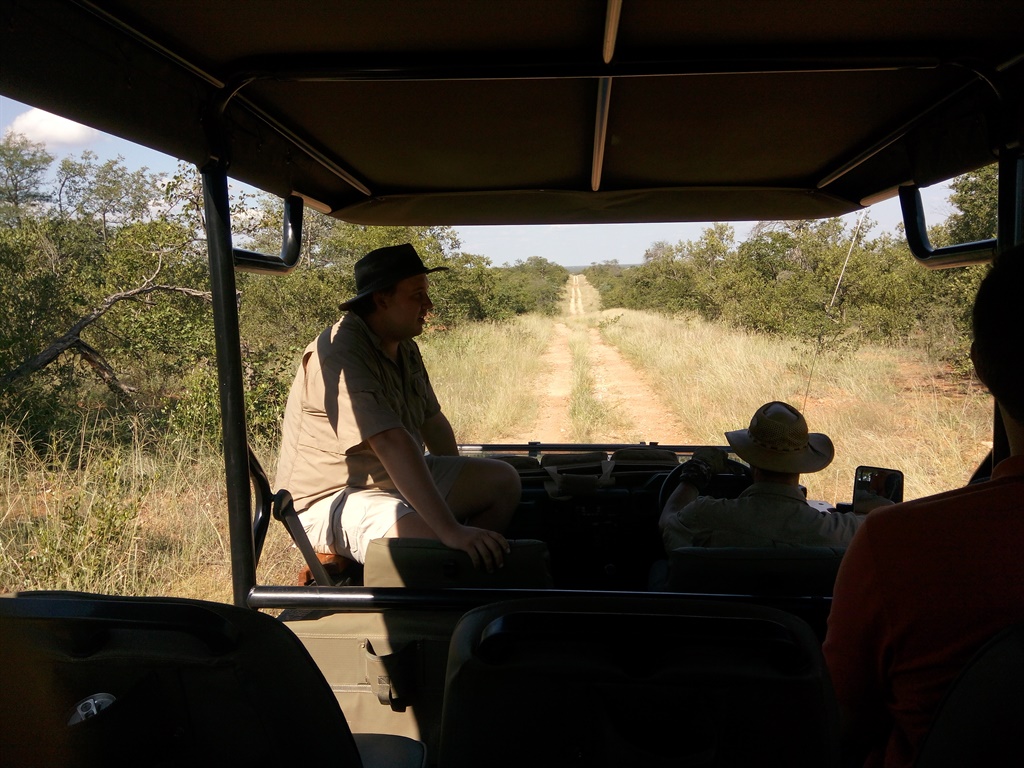
One of the few times a vehicle was better suited than our feet and legs (Photo: Ethan Van Diemen)
Arriving at what would be our accommodation, one could not help but be engrossed by the environment. It is amply clear that the camp was designed to minimise both its impact on the surrounding environment and its reliance on the outside world. Yes, I said outside world because one truly does feel a sort of pioneering, out-in-the-wild feeling and experience at Mthimkhulu.
With water for showers being heated by a fire pit outdoors, energy for the electrical outlets coming from sustainable sources and the water being drawn from a natural underground reservoir - if you’re looking to go off the grid, Mthimkhulu is definitely a place for you to consider.
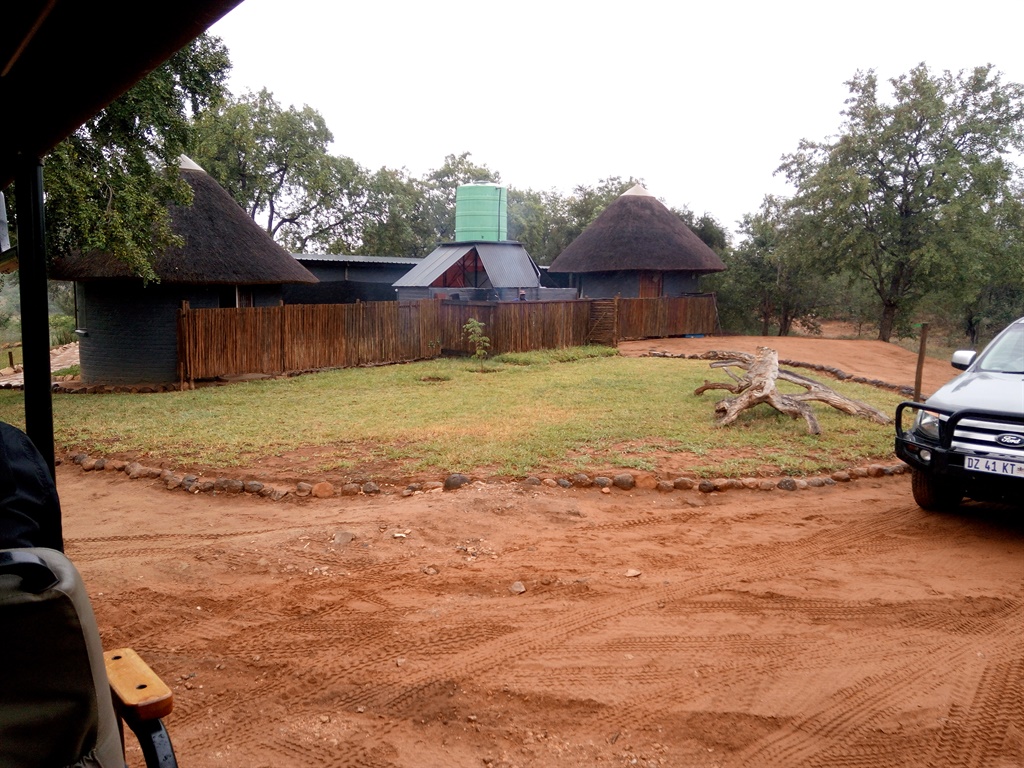
Authentic, unpretentious and with a limited impact on the surroundings, Mthimkhulu is a refreshing change from the standard luxury bush lodge formula (Photo: Ethan Van Diemen)

This panoramic photograph shows the back area of the lodging with the Kruger border off in the distance (Photo: Ethan Van Diemen)
Mthimkhulu Wilderness Trails is located within the Greater Kruger bush in authentic, untouched and untamed African wilderness.
What would have been the only indicators of human activity have long since been removed, specifically the fence that used to run parallel to the banks of the Klein Letaba River separating Kruger proper from communal and privately owned land. This 7 500 hectare private reserve shares this unfenced border with the Kruger National Park and spans 42 kilometres of river frontage.


A panoramic view of the Klein Letaba river from its banks. Best seen on foot. (Photo: Ethan Van Diemen)
Now that we intrepid explorers had gotten a lay of the land and acclimatised to the temperatures, it was time for a light lunch and safety presentation. Over some juice and triangle-cut sandwiches, we were introduced, properly, to the men and woman who would be ensuring that we didn’t end up as a lion’s main course.
Gert Esterhuizen is one of those men. An unassuming man whose modest disposition belies his extensive and detailed knowledge of the local environment (and beyond) gave us the low-down on how to stay safe, how to behave in the bush in a way that minimises harm and doesn’t disturb the animals and other life forms that call it home.
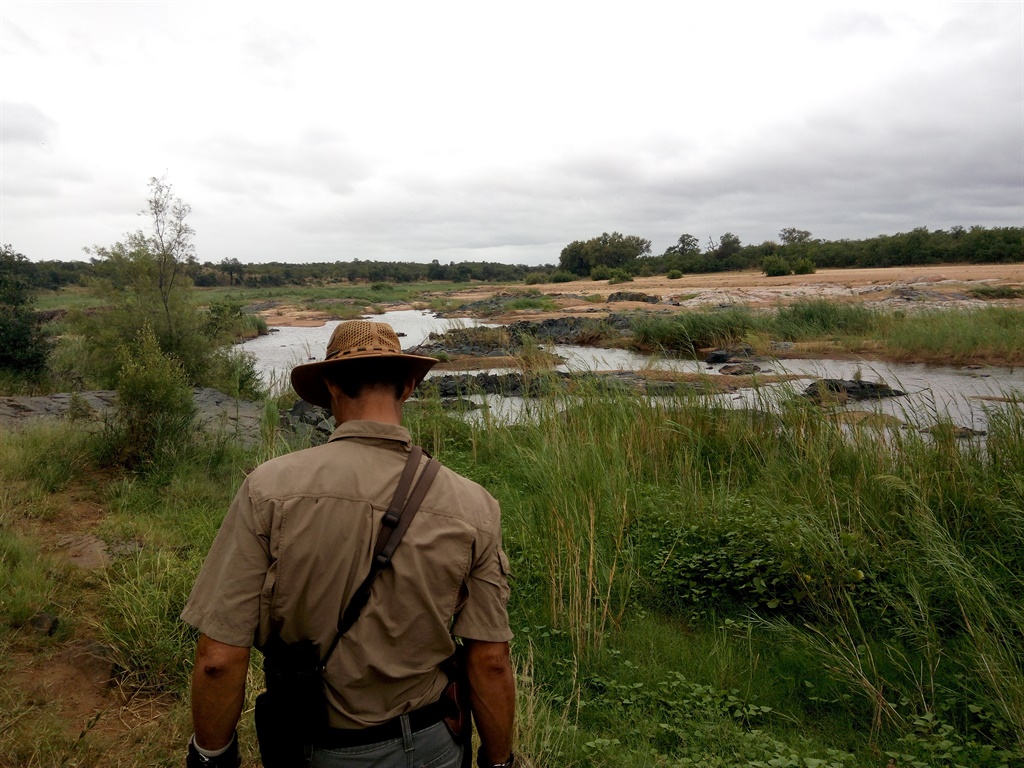
Gert Esterhuizen is THE man you want taking you on a walking tour of the African wilderness. With deep, relevant knowledge, a witty sense of humour and a keen sense of the area - you're in great hands (Photo: Ethan Van Diemen)
Taking to the trails
Dripping in muted khaki greens and browns, the team comprised of Bradley Frolich, Gert and endlessly hospitable Berlize Strydom, explained how the walks would be done. They were quite thorough although it really was no steep learning curve to be honest - just listen to and follow the guy in front with the loaded rifle in a single-file line.
Thoroughly briefed and eager to get exploring in the hopes of seeing something exciting like a lion or an elephant we giddily started our walking journey along the banks of the Klein Letaba. This is where the deep knowledge of the guides first revealed itself.
Clumsily stumbling along as we the uninitiated city-dwellers do, we were walking completely oblivious to the evidence of life and activity that was all around us.
I never walk around looking at my feet but if you’re in the bush it's a great idea to tilt your head downwards regularly. Droppings, broken foliage, prints and more are all tell-tale signs of life. These are the details that make these walks an experience unlike any other. Often overlooked species, the medicinal uses of plants and trees, the secret habits of mammals in the wild - these things are just not as easy to see the finer details of the bush from the barrier of a vehicle.
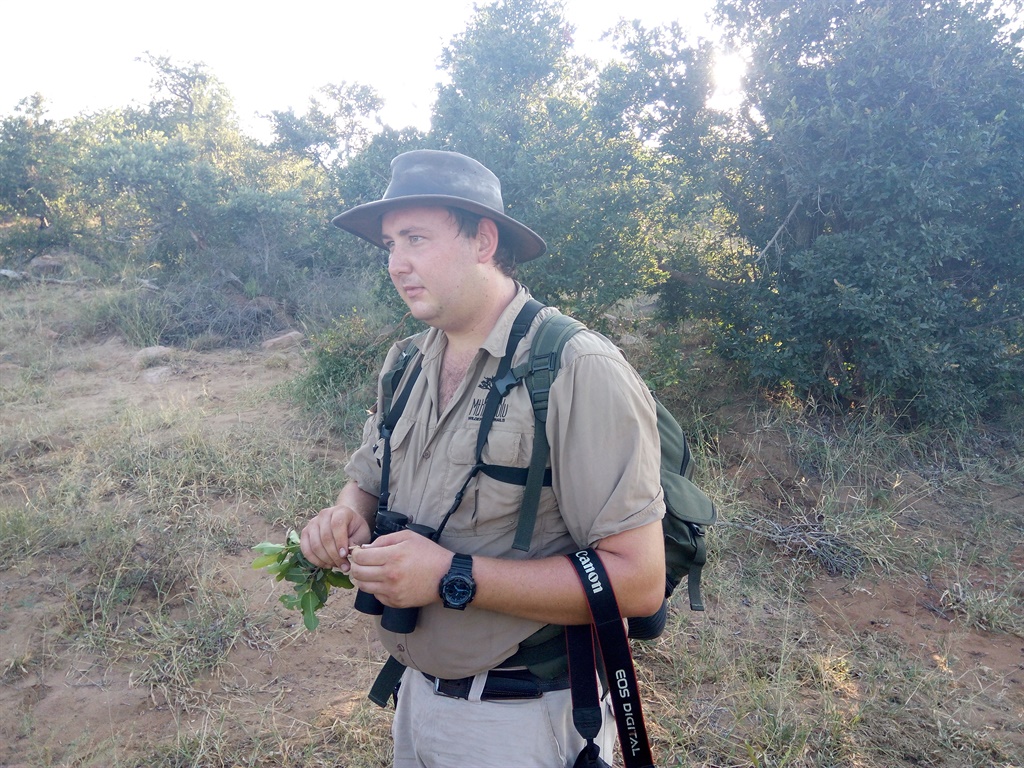
Bradley Frolich shows us just one of the many things people in vehicles would likely drive right by and never notice. In this instance, he shows a twig that can be used as a makeshift toothbrush (Photo: Ethan Van Diemen)
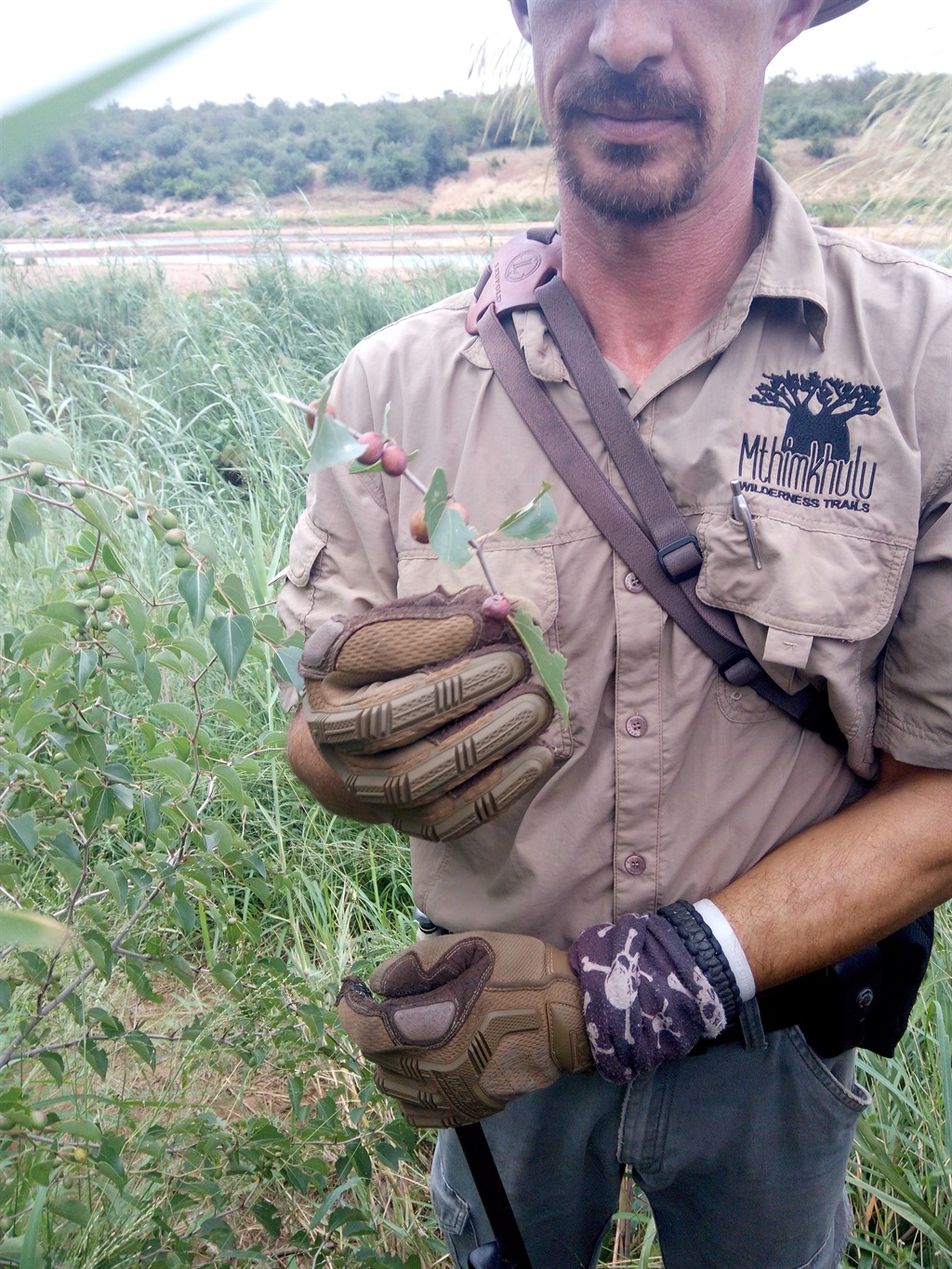
Gert shows the group one of the berries that are safe to eat should you find yourself in a survival situation in the bush. Make sure you know what you're eating before you put it in your mouth. (Photo: Ethan Van Diemen)
The group saw a number of different prints of various animal species on this first walk, each of which they could identify. Water buffalo, spotted hyena, elephant and impala - we saw all the tracks but sadly it seemed that they had long since passed on, perhaps after having their fill of water.
Asking questions about the prints, animals and plants - you could not ask a question that these guys can’t answer. With their incredible knowledge bolstered by modern technology (think bird-whistle, paw-print and tree identification apps), it was an incredible learning experience.



These prints are unmistakable signs of life.
Scat and underfoot prints indicate that an antelope had passed through the area
The variety and frequency which one sees while walking around the bush is astounding (Photos: Ethan Van Diemen)
Flying high above the plateau escarpment that separates the highveld from the Mpumalanga Lowveld, one is immediately awestruck by the seemingly empty and vast bush that can be seen below.
It is an incredible sight, especially considering that the idea of it being an empty space could not be further from the truth - what with it teeming with all manner of wildlife.
This sight takes on an additional significance as the realisation sets in that this vast bushveld will be where you will be walking around exploring, literally on-foot.
For those looking for an authentic, rugged bush experience, with sensory-heightening excitement, untrammelled by the limitations of a vehicle and unpretentious in its detachment from the buzz of technology and the modern world - Mthimkhulu Wilderness Trails offers visitors what they want in spades.
The start of an adventure
Hopping off of our small plane at one of the tiny, private airports all across safari land, we were smacked in the face by an unrelenting, unforgiving and pure African heat. Hard to believe that earlier in the day it had been mild and gloomy only a few hours away in Johannesburg. That’s one way for you to be sure you’re really in the bush.

A panoramic photograph of the arrivals area at the airport in Phalaborwa. (Photo: Ethan Van Diemen)
Greeted by two of the tracker-guides that would later prove, beyond measure, their tracking ability and environmental and wildlife knowledge, we were welcomed into our snack-laden motor vehicle and off we went.
Travelling across often bumpy, always dusty roads as we made our way to the Mthimkhulu Wilderness Trails camp, we were given the chance to acclimatise and ask questions. It really cannot be overstated how receptive our tracker-guides would prove to be, but more on that later.

One of the few times a vehicle was better suited than our feet and legs (Photo: Ethan Van Diemen)
Arriving at what would be our accommodation, one could not help but be engrossed by the environment. It is amply clear that the camp was designed to minimise both its impact on the surrounding environment and its reliance on the outside world. Yes, I said outside world because one truly does feel a sort of pioneering, out-in-the-wild feeling and experience at Mthimkhulu.
With water for showers being heated by a fire pit outdoors, energy for the electrical outlets coming from sustainable sources and the water being drawn from a natural underground reservoir - if you’re looking to go off the grid, Mthimkhulu is definitely a place for you to consider.

Authentic, unpretentious and with a limited impact on the surroundings, Mthimkhulu is a refreshing change from the standard luxury bush lodge formula (Photo: Ethan Van Diemen)

This panoramic photograph shows the back area of the lodging with the Kruger border off in the distance (Photo: Ethan Van Diemen)
Mthimkhulu Wilderness Trails is located within the Greater Kruger bush in authentic, untouched and untamed African wilderness.
What would have been the only indicators of human activity have long since been removed, specifically the fence that used to run parallel to the banks of the Klein Letaba River separating Kruger proper from communal and privately owned land. This 7 500 hectare private reserve shares this unfenced border with the Kruger National Park and spans 42 kilometres of river frontage.


A panoramic view of the Klein Letaba river from its banks. Best seen on foot. (Photo: Ethan Van Diemen)
Now that we intrepid explorers had gotten a lay of the land and acclimatised to the temperatures, it was time for a light lunch and safety presentation. Over some juice and triangle-cut sandwiches, we were introduced, properly, to the men and woman who would be ensuring that we didn’t end up as a lion’s main course.
Gert Esterhuizen is one of those men. An unassuming man whose modest disposition belies his extensive and detailed knowledge of the local environment (and beyond) gave us the low-down on how to stay safe, how to behave in the bush in a way that minimises harm and doesn’t disturb the animals and other life forms that call it home.

Gert Esterhuizen is THE man you want taking you on a walking tour of the African wilderness. With deep, relevant knowledge, a witty sense of humour and a keen sense of the area - you're in great hands (Photo: Ethan Van Diemen)
Taking to the trails
Dripping in muted khaki greens and browns, the team comprised of Bradley Frolich, Gert and endlessly hospitable Berlize Strydom, explained how the walks would be done. They were quite thorough although it really was no steep learning curve to be honest - just listen to and follow the guy in front with the loaded rifle in a single-file line.
Thoroughly briefed and eager to get exploring in the hopes of seeing something exciting like a lion or an elephant we giddily started our walking journey along the banks of the Klein Letaba. This is where the deep knowledge of the guides first revealed itself.
Clumsily stumbling along as we the uninitiated city-dwellers do, we were walking completely oblivious to the evidence of life and activity that was all around us.
I never walk around looking at my feet but if you’re in the bush it's a great idea to tilt your head downwards regularly. Droppings, broken foliage, prints and more are all tell-tale signs of life. These are the details that make these walks an experience unlike any other. Often overlooked species, the medicinal uses of plants and trees, the secret habits of mammals in the wild - these things are just not as easy to see the finer details of the bush from the barrier of a vehicle.

Bradley Frolich shows us just one of the many things people in vehicles would likely drive right by and never notice. In this instance, he shows a twig that can be used as a makeshift toothbrush (Photo: Ethan Van Diemen)

Gert shows the group one of the berries that are safe to eat should you find yourself in a survival situation in the bush. Make sure you know what you're eating before you put it in your mouth. (Photo: Ethan Van Diemen)
The group saw a number of different prints of various animal species on this first walk, each of which they could identify. Water buffalo, spotted hyena, elephant and impala - we saw all the tracks but sadly it seemed that they had long since passed on, perhaps after having their fill of water.
Asking questions about the prints, animals and plants - you could not ask a question that these guys can’t answer. With their incredible knowledge bolstered by modern technology (think bird-whistle, paw-print and tree identification apps), it was an incredible learning experience.



These prints are unmistakable signs of life.
Scat and underfoot prints indicate that an antelope had passed through the area
The variety and frequency which one sees while walking around the bush is astounding (Photos: Ethan Van Diemen)
